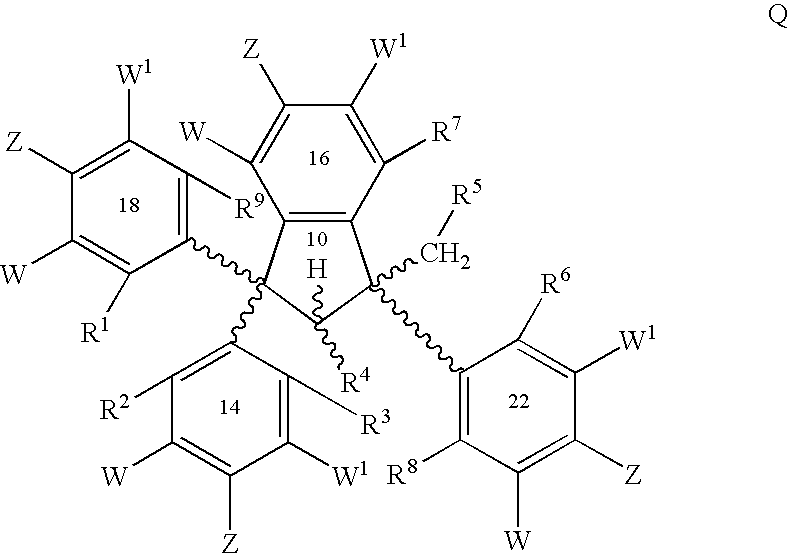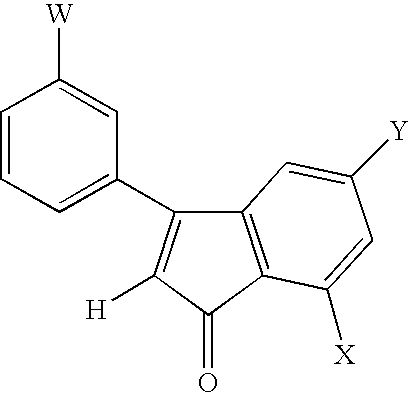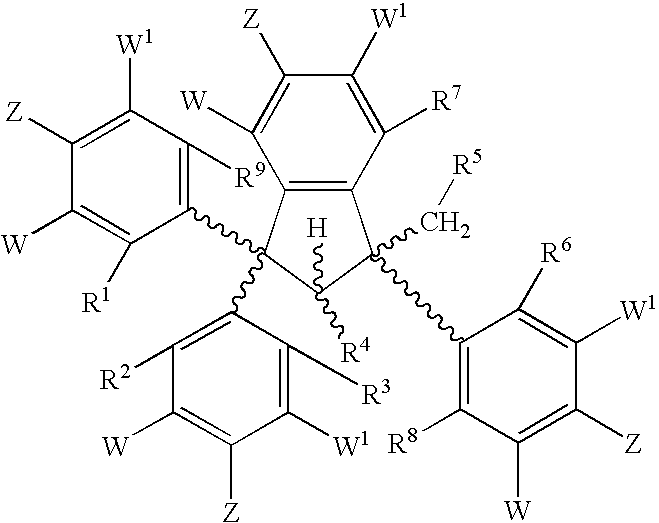Conformationally constrained compounds as dendrimer cores
a technology of dendrimer core and compound, which is applied in the field of dendrimer cores, can solve the problems of dendrimer cores having self-limiting growth characteristics, compound still exhibits too much rotatidnal flexibility in their bonds, and sulfur or oxygen heterocycles are generally unsuitable for us
- Summary
- Abstract
- Description
- Claims
- Application Information
AI Technical Summary
Benefits of technology
Problems solved by technology
Method used
Image
Examples
Embodiment Construction
Synthesis of Ethyl 3,3-bis-(3-Methoxyphenyl)-3-hydroxypropionate
A 2000 mL three-necked, round-bottomed flask equipped with a magnetic stirring bar is the reaction vessel. The flask is furnished with, at one neck, a dry-ice cooled condenser with an oil bubbler on the vent, and at another neck a rubber septum with a bored hole connected with a length of a polyethylene tubing attaching it to an ammonia cylinder. The centre neck serves to charge the components and is temporarily plugged with a stopper. The interior of the flask is thoroughly flushed with nitrogen and the flask is immersed in an acetone-dry ice bath. Ammonia flow is passed into the flask until ca 500 mL of liquid is condensed, whereupon the flask is removed from the cooling bath. 2.84 g (0.41 gat) of lithium wire is cut into approximately 1 cm pieces and kept under hexanes. A small piece of this lithium is dropped into the flask, creating an intense ink-blue colour. Ca. 0.2 g of ferric nitrate nonohydrate is added. After...
PUM
| Property | Measurement | Unit |
|---|---|---|
| pH | aaaaa | aaaaa |
| temperature | aaaaa | aaaaa |
| stereoisomer | aaaaa | aaaaa |
Abstract
Description
Claims
Application Information
 Login to View More
Login to View More - R&D
- Intellectual Property
- Life Sciences
- Materials
- Tech Scout
- Unparalleled Data Quality
- Higher Quality Content
- 60% Fewer Hallucinations
Browse by: Latest US Patents, China's latest patents, Technical Efficacy Thesaurus, Application Domain, Technology Topic, Popular Technical Reports.
© 2025 PatSnap. All rights reserved.Legal|Privacy policy|Modern Slavery Act Transparency Statement|Sitemap|About US| Contact US: help@patsnap.com



